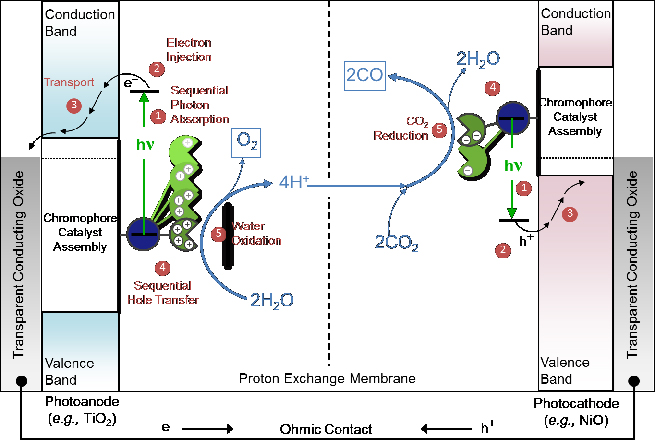报告时间:2017年5月18日上午9:00
报告地点:科技创新大楼B113室
报告题目:CHROMOPHORE-CATALYST ASSEMBLIES FOR SOLAR FUELS
CHROMOPHORE-CATALYST ASSEMBLIES FOR SOLAR FUELS
Kirk S. Schanze
Department of Chemistry, University of Texas at San Antonio,
1 UTSA Circle, San Antonio, TX 78712
The dye-sensized photoelectrosynthesis cell (DSPEC) brings together molecular or polymer based chromophores and catalysts at semiconductor interfaces to use sunlight to drive water oxidation and/or CO2 reduction. The Solar Fuels Energy Frontier Research Center (http://www.efrc.unc.edu), seeks to develop the components needed to create a tandem DSPEC, including molecular and polymeric chromophores and catalysts. These investigations include molecular and polymer synthesis, photophysical, electrochemical, and photoelectrochemical characterization. The lecture will highlight recent results from the Center, including detailed study of photodynamics and photoelectrochemistry of specific polymer based chromophore-catalyst assemblies for water oxidation at a SnO¬2/TiO2 core-shell photoanode and water reduction at a NiO photocathode.

References
[1] Morseth, Z. A, et. Al., “Ultrafast Dynamics in Multifunctional Ru(II)-Loaded Polymers for Solar Energy Conversion”, Acc. Chem. Res. 2015, 48, 818–827.
[2] Chen, Z. et al., „Light Harvesting Polymers: Ultrafast Energy Transfer in Polystyrene Based Arrays of -Conjugated Chromophores“, J. Phys. Chem. B 2014, 118, 372-378.
[3] Leem, G.; et al., “Light Harvesting and Charge Separation in a -Conjugated Antenna Polymer Bound to TiO¬2”, J. Phys. Chem. C 2014, 118, 28535-28541.
[4] Leem, G.; Sherman, B. D.; Burnett, A.; Morseth, Z. A.; Wee, K.-R.; Meyer, T. J.; Schanze, K. S., “Light-Driven Water Oxidation Using Polyelectrolyte Layer-by-Layer Chromophore–Catalyst Assemblies”, ACS Energ. Lett. 2016, 1, 339–343.
 KSS Biography.pdf
KSS Biography.pdf
